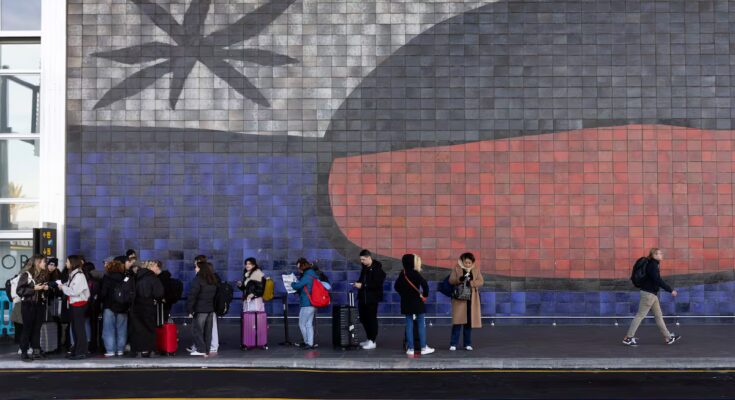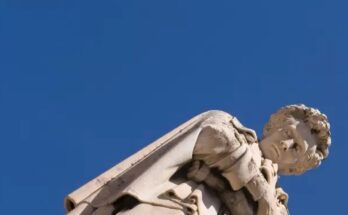The ceramic mosaic that Joan Miró installed in 1970 at Barcelona airport is in danger. The Official State Gazette (BOE) stated this on Wednesday, underlining: “The mural is located in an outdoor area, with high passenger and vehicle traffic, and in a location close to the sea. Due to these conditions, bird droppings, sand, moisture, pollution, dust and dirt quickly accumulate on the surface of the mural.” The BOE points out that the intensive use of the airport exposes the works to “human risk factors, due to accidents, vandalism or simply carelessness”. But not only that: it indicates that there are defects in the “firing of the ceramic and that its glazing and the assembly of the slabs have caused “leaks of material, small cracks and other types of alterations”. The bulletin warns that, in such a situation, the Ministry of Culture has started the procedure to declare the mural of Cultural Interest (BIC), the maximum protection foreseen to take “the appropriate measures for its correct conservation”. The BIC declaration was made months after Aena had announced its intention to move the mural to Terminal 1, the largest and newest at the airport. Still no date for the move pending major works in the destination terminal, but in any case the change of location will require a prior report from the Ministry once ownership has been declared to the BIC.
Miró’s mural is part commission, part gift. In 1968, a new terminal at Barcelona Airport, today’s Terminal 2B, was inaugurated, and the Francoist Barcelona city council – led by José María de Porcioles – commissioned Miró to create a large mural. The artist designed a model in 1969 and the work was created – in collaboration with the ceramist Josep Llorens Artigas – and inaugurated on 18 March 1971. The work is a pharaonic mural measuring 50 meters wide by 10 meters high. It is not the largest mosaic by Miró since there is another one measuring 55 by 10 meters in the Wilhelm Hack Museum in Ludwigshafen (Germany). The El Prat mural extends from the floor to the main beam that supports the roof and is made up of 4,865 slabs of glazed stoneware. Each of the plates weighs about six kilos. Once the pieces were fired, it took six months to install all the plates. In total, the mural weighs 35 tons. The BOE itself warns: “Each plate was mounted after firing on a stable concrete wall of the terminal, starting from the bottom right and using only a cement mortar for fixing without covering the joints. The chosen wall on which the mural rests is not load-bearing, in anticipation of its correct installation and possible disassembly.”
At the same inauguration of the mural, on March 18, 1971, Miró went completely overboard and undertook to design two other large works intended to welcome visitors to the city who arrived by land, sea and air (the latter he already had with the airport mural). He announced a huge 60-meter sculpture in Cervantes Park to welcome those arriving by car (it was not built) and the 65-square-meter mosaic installed in the Pla de l’Os de la Rambla for those arriving in the city by sea.
Sources from the Ministry of Culture assured EL PAÍS that the organization does not oppose the transfer of the mural to Terminal 1 but that, if this were to happen, it will now have to have the necessary reports and guarantees for its transfer. In fact, it was the administrations themselves – both the Ministry and the Generalitat together with the Joan Miró Foundation – who agreed on the need to protect a mural exposed to the elements for 54 years. The only major intervention carried out on the mosaic occurred twenty years ago, in 2005, when it was restored and conservation problems were identified.
Now, once the mosaic has been cataloged as BIC, the work is protected but it is allowed to transfer it to the other terminal. Indeed, when its transfer was announced, one of the voices against the moving of the mural was that of the College of Architects of Catalonia (COAC), which asked that the work be declared BIC and assured that Miró conceived the mosaic in the place where it is located. AENA has planned the transfer and the ENAIRE Foundation – which manages the historical, cultural and artistic heritage accumulated in air transport infrastructures – together with the collaboration of the Fundació Miró and with the necessary reports from the Ministry of Culture, will decide how to carry it out. The nearly 4,865 plates will have to be removed, transported and reassembled. At the moment Aena does not know when it will be able to carry out this operation.



